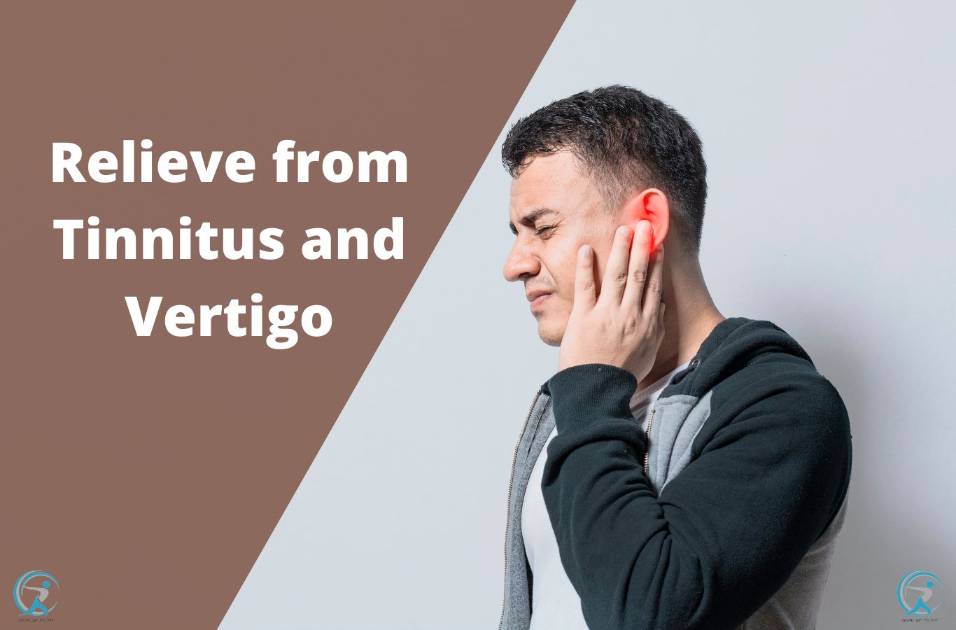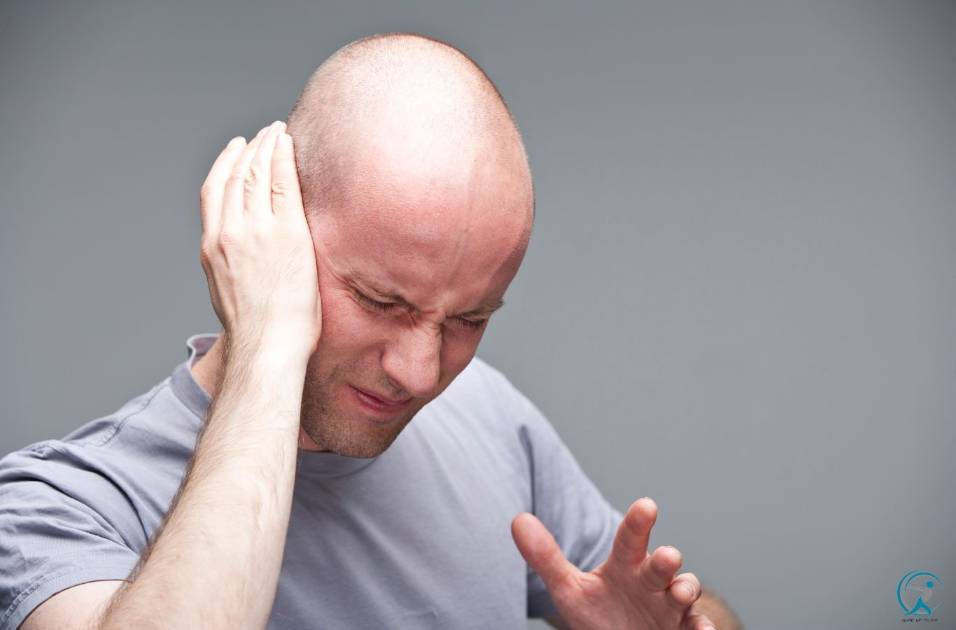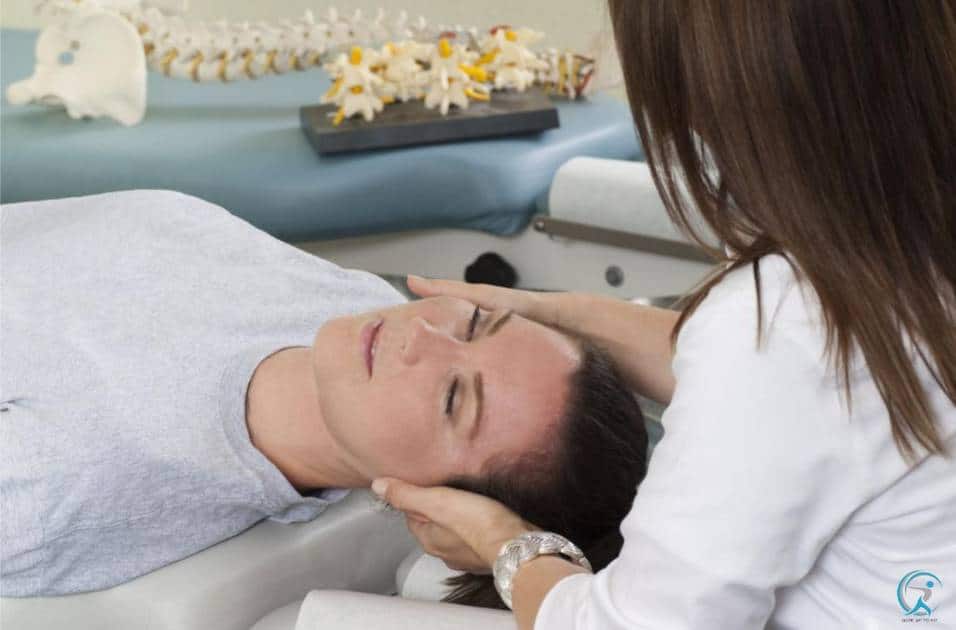Tinnitus and vertigo are common and debilitating conditions that can be difficult to manage. Learn which exercises help you relieve tinnitus and vertigo.
Tinnitus and vertigo are two different medical conditions, but they are interrelated. The symptoms of tinnitus can be cured with the help of yoga exercises. Many yoga poses can be done by people who suffer from tinnitus and vertigo. These include Matsyasana, Ustrasana, Garudasana, etc., which will help you get relief from both these conditions.
Tinnitus is the perception of sound in the absence of external sources of noise. Vertigo is a sensation that involves both hearing and balance, often described as a “spinning” or “hearing your heartbeat” in one or both ears. Tinnitus and vertigo are very common symptoms, but they can also be serious health problems that require immediate medical attention. Both conditions can affect anyone at any age. However, they are more common among older adults and may be triggered by exposure to loud noises such as jet engines or gunfire.

Key Takeaways
- Tinnitus and vertigo can be managed through simple exercises.
- The Epley Maneuver supports inner ear health, mitigating vertigo symptoms.
- Brandt-Daroff exercises are effective in resolving balance disorders like vertigo.
- Tinnitus Retraining Therapy (TRT), an exercise regimen, can alleviate tinnitus discomfort.
- Yoga and meditation provide holistic approach to manage tinnitus and vertigo.
- Maintaining a healthy lifestyle, including regular exercise and a balanced diet, may reduce the impact of these conditions.
- Always consult with a healthcare professional before starting any new exercise routine to manage tinnitus and vertigo.
Easy Exercises to Relieve Tinnitus and Vertigo
For many people, finding relief from tinnitus and vertigo can feel like a constant struggle. Various factors, such as stress or even certain body positions, can act as a trigger for their tinnitus. Understanding the cause of tinnitus and exploring practical treatments can make a significant difference in quality of life.
Understanding Tinnitus and Vertigo
Tinnitus, often described as a persistent ringing in the ears, may also present as a buzz or hiss. It’s a symptom linked to various underlying conditions, primarily related to auditory health. Hearing loss treatment, including audiology rehabilitation, can often help manage tinnitus symptoms.
Vertigo, on the other hand, comes when small calcium crystals in your ear shift, sending inaccurate signals to your brain about your body’s movement. The resulting dizziness can be distressing, but certain exercises and home remedies can safely treat the symptoms.
The two most common types of vertigo are benign paroxysmal positional vertigo and vestibular neuritis.
The two most common types of vertigo are benign paroxysmal positional vertigo and vestibular neuritis.
BPPV is caused by loose debris that moves around in the inner ear when you change position. The debris can be dislodged from the utricle, which contains fluids that help you keep your balance. Once this happens, it will cause a feeling like you are spinning even though you aren’t moving at all—and often leads to dizziness or vertigo.
Vestibular neuritis is caused by inflammation in the inner ear. It can also cause nausea, vomiting, sensitivity to sounds or light, and dizzy spells that last longer than 30 minutes but only come on occasionally.

Benign paroxysmal positional vertigo (BPPV) is the most common cause of vertigo.
BPPV occurs when tiny calcium particles, called otoconia, get loose and settle in one of the inner ear canals. The result is an imbalance between the vestibular system, which controls balance and eye movements, and other parts of the brain that control eye movements.
Your doctor may be able to diagnose BPPV just by examining your eyes or performing other tests such as a brain scan or electromyography (EMG). In some cases, they may perform additional tests, such as a nerve conduction test, to see if there are any underlying problems with nerves connected to muscles used for balance.
Vestibular neuritis occurs either in isolation or as part of a viral infection of the inner ear.
Vestibular neuritis is caused by inflammation of the vestibular nerve, which is responsible for balance and movement. It can be acute or chronic. Acute vestibular neuritis causes sudden symptoms that last from weeks to months. Chronic vestibular neuritis may become permanent if it’s not treated quickly enough with medication or other intervention therapies like exercises.

Symptoms generally last for days to weeks, but permanent vestibular damage can occur.
If symptoms last longer than that, it’s possible that you’ve suffered permanent damage to your inner ear—and this can happen with a single bout of vertigo or repeated attacks over time.
In general, vertigo is more likely than tinnitus to cause hearing loss in people with it. However, your hearing loss risk increases significantly if you experience vertigo due to an injury rather than aging.
Symptoms may persist for weeks or months.
How long it takes to recover from vertigo depends on the cause. In most cases, symptoms go away after a few days or weeks.
However, in some cases, symptoms may persist for weeks or months as the brain relearns how to process information from the vestibular system.
In other cases, such as multiple sclerosis and chronic low-back pain, recovery can be slow and incomplete even after several years of treatment.

What are the signs to look out for?
Other signs to look out for include stuffy nose, cough, fever, vomiting, diarrhea, swelling in the face or neck, and a sore throat.
If you have these symptoms, it’s best to see your doctor immediately.
An otolaryngologist will review your case history and determine the source of your dizziness.
So what does it do? An otolaryngologist will first take a case history and determine the source of your dizziness by looking into your ears through an otoscope. They will examine you and ask questions about your symptoms.
The doctor will listen to your heartbeat and check for any murmurs that may indicate something wrong with the blood flow in your body. They may also feel around in the neck or chest area to see if anything is abnormal, such as enlarged lymph nodes or veins.
Optokinetic stimulation
Optokinetic stimulation involves watching side-to-side movements on a monitor (usually a home video) while moving your head back and forth in time with the movements. This will help your brain to establish normal eye movement coordination again.
You perform the test in a dark room, allowing you to focus solely on the object moving on the screen. This method works best with objects moving vertically or horizontally. The entire process might take up to 3 hours as you need to conduct it over multiple sessions. However, you can easily do it at home if you have an OptoKinetron machine. You can purchase this machine from medical supply companies like Apex Medical Technologies Inc., Kinetic Vision Systems Corp., and Pristine Medical Equipment Inc.

Computerized dynamic posturography measures how well you maintain your balance.
Computerized dynamic posturography is a test that measures how well you maintain your balance when you’re standing on a platform that moves in different directions.
The test examines whether you can keep your eyes open and focus on an object while the platform moves, how quickly you recover from a stumble or twitch, and what happens to your posture as the platform moves. It’s used to diagnose disorders like vertigo, disequilibrium syndrome, and Meniere’s disease.
It may also be used to evaluate patients with dizziness related to trauma (for example, after a fall) or neurological conditions such as Parkinson’s disease or multiple sclerosis (MS).
It is important to consult a doctor if you experience any kind of tinnitus or vertigo.
Tinnitus and vertigo can be caused by many things, such as exposure to loud noises, head or neck injuries, or heart problems. It’s important to see a doctor if you experience any of these symptoms or think that you have tinnitus or vertigo. You should also take care of yourself—ensure you get enough sleep, eat well, and drink plenty of water.

Tinnitus can be ignored with the help of loud noises or music.
Tinnitus can be ignored with the help of loud noises or music. If you want to ignore your tinnitus, listen to loud music or watch a TV show at a high volume. Do not listen to music or watch TV for a long time, as it may increase your stress level.
Alternately, you can also put earbuds in one ear while playing a song and then press the other ear against something hard like a wall so that only one side of your head hears anything while an object blocks off the other. Do this until you feel like you are no longer hearing anything.
Patients with vertigo should exercise in an open space.
- You should exercise in an open space to prevent falling and hurting yourself.
- You should exercise in an open space to avoid injury.
- You should exercise in an open space to avoid accidents.

Vertigo is nothing but a visual illusion.
Vertigo is nothing but a visual illusion caused by a disorder. It often occurs due to health issues like inner ear problems, blood pressure, or heart disease. It can also be caused by anxiety, stress, sleep deprivation, or sinusitis. If you are suffering from vertigo, it is important to consult a doctor immediately because, if not treated properly, it may lead to other physical complications such as tinnitus and hearing loss.
This article will discuss some simple exercises that help relieve vertigo and tinnitus.
The first thing you should do is take deep breaths when you feel dizzy or sick in the stomach area. This increases oxygen levels in your body, which helps reduce nausea symptoms significantly!
Next up on our list of easy exercises for relieving tinnitus/vertigo symptoms would be yoga! Yoga can help improve balance by strengthening muscles around the inner ear region (where most cases of dizziness originate). You can try doing different postures like Balasana (Child’s Pose), where one lays face down with knees bent and head resting on folded arms; Adho Mukha Svanasana (Downward Facing Dog), where one extends their legs behind them while resting their weight on palms and toes; Tadasana (Mountain Pose), where one stands upright with feet apart & parallel while raising arms above head with palms facing downwards towards each other.
Tinnitus and vertigo are interrelated.
Tinnitus and vertigo are interrelated. Many people who suffer from vertigo also suffer from tinnitus. Some individuals do not experience any symptoms of vertigo until they develop tinnitus. This is because both conditions have a common cause: stress on the inner ear.
Tinnitus is caused by a disruption in the balance system in your body, which relays information from your ears to your brain so that it can determine where the sound originates. Stress on this system can cause damage or dysfunction, causing the ringing noise associated with tinnitus.
Vertigo results in an imbalance between signals sent to your brain about which direction you’re facing relative to gravity—for example, if you tilt your head too far back or roll over onto one side while lying down (or even just move). This causes dizziness and nausea because it creates confusion about where up is.
When these two problems occur together, they combine into what we call “vestibular” disorders—meaning they affect how we perceive our surroundings based on our sense of balance.

It should not be carried out in a hurry.
The exercises should not be carried out in a hurry. Take your time and do not rush through the exercises. It is also important to note that you should not perform these exercises if you have just finished a long day of work or are exhausted. These are also no-goes if you are ill or under the influence of alcohol or drugs (in which case it’s probably best to consult your doctor).
Exercises For Relief
One of the easiest and most recommended exercises for vertigo is the Epley Maneuver. To start this exercise, sit on your bed with a pillow behind you. Turn your head 45 degrees to the right and quickly lie back onto the pillow, keeping your head turned. You may feel some dizziness; wait 30 seconds for it to pass. Then, turn your head 45 degrees to the left and wait another 30 seconds. Finally, roll onto your left side, stay in this position for 30 seconds more, then sit up. Repeat this exercise several times a day for maximum relief.
For tinnitus management, relaxation exercises can be beneficial. Many people find that stress is a trigger for their tinnitus. Guided relaxation, focusing on releasing tension in the neck and jaw, can reduce tinnitus symptoms. Practice these exercises at least two to three times a day or whenever you feel stressed.
Tinnitus and vertigo can be cured with yoga exercises such as Matsyasana, Ustrasana, Garudasana, and so on.
Yoga is one of the best ways to relieve stress and anxiety. Yoga helps you relax your mind, body, and soul by doing simple postures or asanas.
Here are some yoga exercises for tinnitus and vertigo:
- This asana requires you to lie on your belly with your arms stretched out in front of you. Keep your head relaxed by looking downwards or sideways at a slight angle from the top of your forehead so that there is no strain on the neck muscles while doing this asana. You can do this exercise for 10–15 minutes daily.
- This pose helps to release stress from the shoulders, neck, and back muscles, which are most affected by stress-related conditions such as tinnitus and vertigo.
Why might I need the home Epley maneuver?
The Epley maneuver is a treatment for benign paroxysmal positional vertigo (BPPV), a condition that causes spinning sensations. It was named after Dr. John Epley, who developed it in the 1980s.
The home Epley maneuver can help relieve symptoms of BPPV by moving debris from the inner ear out of the semicircular canal where it’s causing symptoms.
If your doctor has recommended the home Epley maneuver and you’re considering making an appointment for it, here are some things to consider:
Why do I need this procedure?
If your doctor has suggested the home Epley maneuver, it’s because they believe you’re dealing with BPPV rather than another issue, such as a brain tumor or stroke. To confirm this, your doctor will conduct a physical examination, which includes eye movement and balance assessments, along with blood tests and imaging scans like CT scans. If all these tests return normal results, your doctor may then recommend an additional test known as an MRI scan with gadolinium injection (MRA). This specific test can reveal any potential damage to your inner ear (labyrinth) due to BPPV.

What are the risks of the home Epley maneuver?
The Home Epley Manoeuvre is a simple procedure that can be done at home to treat benign paroxysmal positional vertigo (BPPV).
The Home-Epley maneuver is not generally recommended for complex cases of BPPV because it can be difficult to perform properly. For this reason, home Epley maneuvers are best performed under the supervision of an experienced clinician.
The risks associated with doing a home Epley maneuver depends on how well you follow instructions and how long you have been experiencing symptoms. If you are unsure whether it is safe to do a home Epley maneuver, talk to your doctor or healthcare provider before attempting one.
Brandt-Daroff Exercise
Brandt-Daroff Exercise is a simple and effective exercise that can be done at home or in the office. It is performed by sitting on a chair with your feet flat on the floor, then leaning back so that you are supported only by your lower back and buttocks. Next, slowly lift both legs off the floor and hold them in front of you with your knees bent at about 90 degrees. Hold for 10 seconds, then slowly lower your legs to the floor. Repeat this exercise 10 times.
The Brandt-Daroff Exercise is intended to strengthen your abdominal muscles and improve balance and coordination. It also helps to reduce stress and anxiety levels by releasing endorphins into the bloodstream.
How to get relief from tinnitus
Tinnitus is a common condition that can be caused by various factors, including hearing loss, ear infections, and exposure to loud noises. The good news is that there are treatments available that can help relieve the symptoms of tinnitus.
Treatment options vary depending on the severity of the condition and individual needs. Treatment may include lifestyle changes and hearing aids in mild cases, while more severe cases may require medication or surgery.

If you have tinnitus, there are several things you can do to help manage the condition:
- Lifestyle changes.
- If you have tinnitus, try these tips for relief:
- Get enough sleep. If you’re tired or stressed, your body produces more cortisol, which can worsen tinnitus.
- Stay hydrated by drinking plenty of water throughout the day.
- Avoid alcohol, which can make the ringing louder in some people with tinnitus.
- Don’t smoke cigarettes because they make it harder for the blood vessels in your head to expand properly — this can worsen tinnitus symptoms.
Next Steps
If these exercises don’t work, don’t despair. It can take time to find the right combination of treatments for tinnitus and vertigo that works best for you. If you haven’t yet sought hearing care for persistent symptoms, consider reaching out to an audiology specialist who can provide personalized recommendations and guidelines based on their expertise. Remember, everyone’s experience with these conditions is unique, so what works for one sufferer might not work for another. Stay patient and keep trying different approaches until you find what works best for you.
FAQs
What are some exercises for tinnitus relief?
Yoga and meditation can help alleviate tinnitus. Deep breathing, mindfulness, and poses like the tree pose can reduce stress and improve tinnitus symptoms.
How can vertigo be managed with exercises?
Epley and Semont maneuvers are effective for vertigo. They involve specific head movements that can reposition displaced inner ear crystals, reducing vertigo symptoms.
Are there any combined exercises for tinnitus and vertigo?
Tai Chi is excellent for both conditions. It encourages deep breathing, balance, and focus, which can alleviate symptoms of both tinnitus and vertigo.
Can regular exercise help with tinnitus and vertigo?
Yes, regular exercise can improve blood flow and reduce stress, both of which are beneficial for managing tinnitus and vertigo symptoms.
What precautions should be taken while exercising with vertigo?
Avoid rapid changes in position or high-intensity exercises. Safety measures like mats or supportive equipment can help prevent accidents due to dizziness.
Conclusion
In wrapping up, remember that your ears aren’t just there for decoration or for catching the latest gossip. They also play a crucial role in your balance. So, when they start ringing like a church bell on a Sunday morning, it’s time to pay attention.
Our article on easy exercises to help you relieve from tinnitus and vertigo gave you the lowdown on simple, yet effective ways to combat these annoying conditions. We’ve shown you how to become a balance expert, with exercises ranging from gentle head movements to fun dance-like routines (Who knew the Cha-Cha could help with tinnitus?).
And let’s not forget the vertigo-vanishing acts we’ve shared, like the Epley maneuver. It’s practically a magic trick, except you’re not pulling a rabbit out of a hat, you’re pulling yourself out of dizziness.
In the grand circus of life, tinnitus and vertigo can make you feel like you’re walking a tightrope without a safety net. But with the easy exercises to help you relieve from tinnitus and vertigo we’ve outlined, you’ll find yourself back on solid ground in no time.
So why not give them a whirl? Who knows, maybe the only thing spinning will be your dance partner on the floor! Don’t let the ringing and spinning keep you off your feet. Take action now, try these exercises and bring balance back into your life!
As a veteran fitness technology innovator and the founder of GearUpToFit.com, Alex Papaioannou stands at the intersection of health science and artificial intelligence. With over a decade of specialized experience in digital wellness solutions, he’s transforming how people approach their fitness journey through data-driven methodologies.